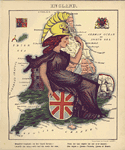Archive for the ‘News’ Category
1945 — Isidor Rabi, a physics professor at Columbia University, suggests a clock could be made from a technique he developed in the 1930’s called atomic beam magnetic resonance.
1949 — Using Rabi’s technique, NIST (then the National Bureau of Standards) announces the world’s first atomic clock using the ammonia molecule as the source of vibrations.
1952 — NIST completes the first accurate measurement of the frequency of the cesium clock resonance. The apparatus for this measurement is named NBS-1.

1955 –The National Physical Laboratory in England builds the first cesium-beam clock used as a calibration source.
1958 — Commercial cesium clocks become available, costing $20,000 each.
1959 — NBS-1 goes into regular service as NIST’s primary frequency standard.
1960 — NBS-2 is inaugurated in Boulder; it can run for long periods unattended and is used to calibrate secondary standards.


1968 — NBS-4, the world’s most stable cesium clock, is completed. This clock was used into the 1990s as part of the NIST time system.



1993 — NIST-7 comes on line; eventually, it achieves an uncertainty of 5 x 10-15, or 20 times more accurate than NBS-6.


Pop open a cold one. Kick back with an ice cold bottle of Bud.
Did you ever take a moment to wonder how beer was packaged before modern production technique came along? It really is fascinating to see the wide variety of bottles and stoppers that have been used throughout beer’s long history.
http://www.blm.gov/historic_bottles/beer.htm is a history of beer and ale bottles for the last 200 years or so. If you are a fan of beer in all its manifestations, this highly illustrated page makes for fascinating viewing and will give you an appreciation of what was lost in individuality and style in beer production with the advent of mass production of beer.
In the good old days, not so long ago, getting information on civil defense preparedness was very difficult because there were no great perceived disasters that people needed to be prepared for.
This wasn’t always true. During the World Wars and during the Cold War, civil defense preparedness was on everyone’s mind. Education about what to do in an attack was taught in our schools, written about in the newspapers and on the news
channels and talked about in local forums. Civil preparedness and defense was on everyone’s minds, especially in the early days of the atomic Cold War where a large percentage of the population was afraid that the Soviet Union could launch a nuclear missile attack at a moments notice. And this level of education (minus the paranoia part) was probably a very good primer for everyone to be aware of.
Currently, we also live under several very real threats. We had 9/11 and several major hurricaines in recent years. With respect to the hurricaines, the areas that are in the bulls-eye target zone get good education every year through special newspaper segments, handouts at the supermarket and lots of information and on radio stations. But there is really no education out there on what to do in case of a terrorist attack or other type of man made disaster like a chemical plant fire (and we’ve seen a few of them in the past few years.)
The proactiveness of the governemnt to educate us in these matters seems to have died in the 1960s and if it weren’t for the almost univeral availability of the internet, you would be very hard pressed to find any useful civil defense materials anywhere in your community. For those who are interested, FEMA does have a section on their website that covers all sorts of disasters, both natural and manmade. The list includes:
- Dam Failure
- Earthquake
- Fire or Wildfire
- Flood
- Hazardous Material
- Heat
- Hurricane
- Landslide
- Nuclear Explosion
- Terrorism
- Thunderstorm
- Tornado
- Tsunami
- Volcano
- Wildfire
- Winter Storm
Each section goes into great detail on what to do before, during and after each type of disaster and it makes for good background reading if you feel a need to be prepared for some sort of unanticipated natural or manmade disaster sometime in your future.
You can get full details at FEMAs website.
Following the success of the widely popular 50 state quarter program, the U.S. Mint is rolling out the U.S. Presidential dollar coin series. The first coins will be placed into circulation in February 2007 and will rotate with a new president appearing every three months. The first four presidents will be George Washington, John Adams, Thomas Jefferson and James Madison.
To be qualified to be on a presidentail coin, a president must have been dead for two years. And each president will appear only one time. The only exception is Grover Cleveland who served nonconsecutive terms. He will be on two issues of the coin.
The coins are the size and color of the Sacagawea dollar.
This is the latest attempt of the U.S. mint to get the public to accept a dollar coin and this time they may succeed. A certain number of the coins will of course be collected and not be on the market but by keeping the coins interesting, it makes getting and working with the change fun.
If they are successful, they will save about $500 million annually in printing costs on one dollar bills as they will need to print less and less of them to replace worn out dollar bills as the new coin gets used more and more.
 Image of England in the |
Geographical Fun: Being Humourous Outlines of Various Countries, published by Hodder and Stoughton in London in 1869, was a singlularly unique atlas undertaking. The atlas is comprised of twelve maps – one for each of twelve European countries. The maps were designed as stereotypical images of each country at the time based on the outline and the shape of the country – similiar to how caricature artists work at modern fairs and festivals. Each map has a verse written about the creation.
In the introduction to the atlas, the author, William Harvey, described his intention in creating the atlas: “It is believed that illustrations of Geography may be rendered educational, and prove of service to young Scholars who commonly think Globes and Maps but wearisome aids to knowledge. If these geographical puzzles excite the mirth of children, the amusement of the moment may lead to the profitable curiosity of youthful students and embue the mind with a healthful taste for foreign lands.”
You will find a variety of countries and images represented in the Geographic
Fun Atlas, including:
- Egnland in the shape of Queen Victoria
- Scotland as a poper travelling through the Scottish bogs
- Ireland as a happy peasant
- France as an empress of the arts – cooking, fashions and dance
- Italy as a revolutionary figure
- Russia as a classic Russian bear
- Denmark as a female figure skater
- and several more fascinating images.

